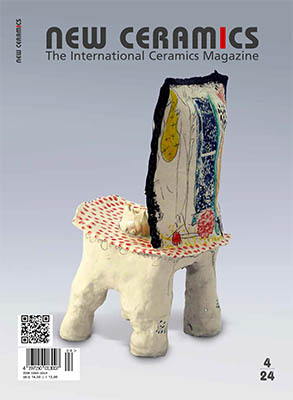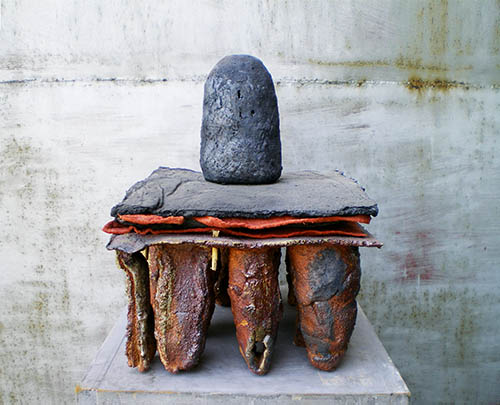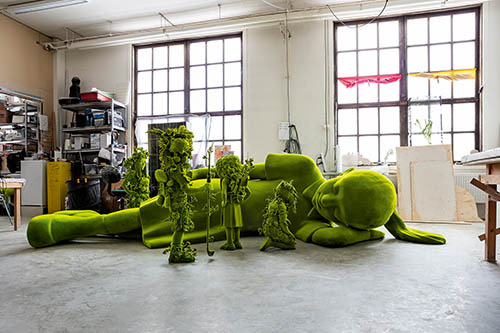Claudia von Boch
Material and Form: People and Stories
Saw your huge, beautiful work 2 years ago at Nyon. How did you start with ceramics?
Born in Canada in 1957, I discovered ceramics in Argentina at the age of 10 and where I lived for 23 years. When I was 10 years old my parents visited a friend, an Argentine ceramicist. Visiting her studio was a real eye opener and I felt an immediate connection to clay. Ever since, I have been delving into ceramics. It is something that comes naturally to me.
First it was a hobby, but I then became autodidact – taking ceramic courses, learning technology and wheel throwing with Argentine ceramicists (Jorge Basile, Guillermo Mané). In 1990 I moved to Switzerland with my family. It was only after arriving in Switzerland in 1990 that I aimed to become a professional ceramicist.
After a year at Céruleum Visual Arts School of Lausanne (1994-95) I obtained a bachelor’s degree in ceramics from the Applied Arts School of Vevey (1995-99). For 25 years I taught ceramics to adults and children all the while developing my own creations in my studio that have been exhibited in Switzerland, France, Germany, Luxembourg, Italy, Croatia, US and Canada.
Over the years I have continued with postgraduate courses in paperclay (Barbara Wagner), mould-making (Sasha Wardel, Séverine Emery-Jacquier, Francois Lemaire), calligraphy (Claire Mosnier, Denise Lach), and porcelain in Jingdezhen.
As of 2019 I stopped teaching although I continue to do occasional workshops in raku, mould-making, kintsugi. Currently I share my time between a studio in Switzerland and a second studio in the Piemont, Italy.
(Monika Gass)











